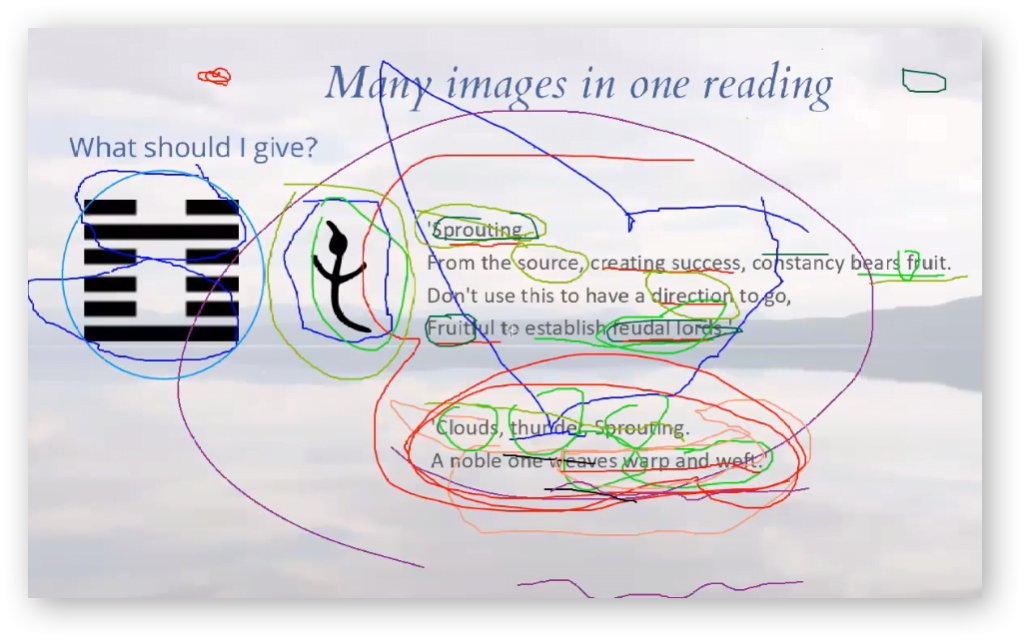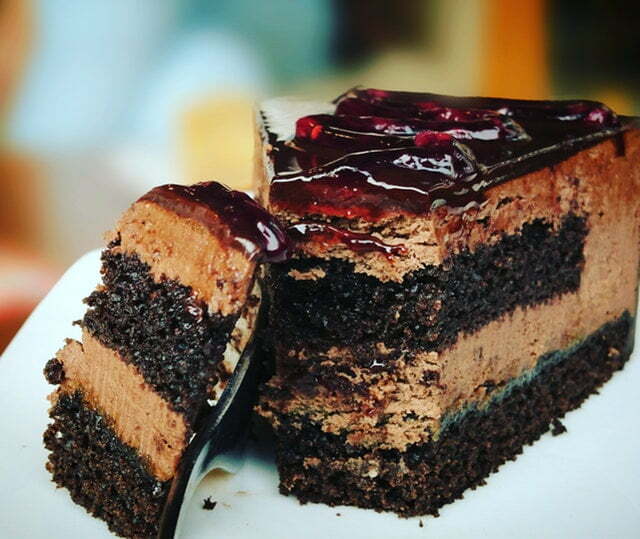The Yijing’s full of imagery. Even though the first impression when you open it is one of wall-to-wall text, it’s also a picture book.
In last month’s ‘Connecting with Imagery’ workshop I put a reading on the screen and asked people to mark all the images they could see. They saw quite a few…

There’s the imagery of the text – and that often comes in layers, with different pictures in the Oracle text and the moving lines – and the imagery concealed within the text, at the roots of the ancient Chinese characters. And then there’s the imagery of the trigrams, and maybe the hexagram itself is a picture, too. Layer upon layer, all part of the whole.
So Hexagram 3, for instance, lets you imagine your situation in terms of a king setting up feudal lords, and a sprouting seed, and torrential rain in a thunderstorm.
And Hexagram 53, Gradual Progress, gives you pictures of a river, and the soaking and penetrating action of water, and a woman marrying, and geese flying home, and a tree growing on a mountain.
During the workshop, someone asked me the very good question,
‘How do you know which image to concentrate on?’
I still can’t think of a very good answer, and I think that’s because all the layers work together. You can dive into any one of them, whichever fascinates or perplexes you most, and hear/see something the reading has to tell you – but I like to do my best to absorb all the imagery Yi offers.
You can simply enjoy it all, without attempting to analyse anything, and experience how the layers of imagery are ‘baked’ together to create the atmosphere of the hexagram. Or looking more closely, you can see how delicately they interact and map onto one another, outlining a shared pattern and ‘quality of the time’.
In Hexagram 53, for instance…










Hello there!
Hexagram 53 is the Marrying Maiden correct?
ETN…
Not quite! 54 is the Marrying Maiden; 53 is Gradual Progress, where it says ‘the woman marries’.